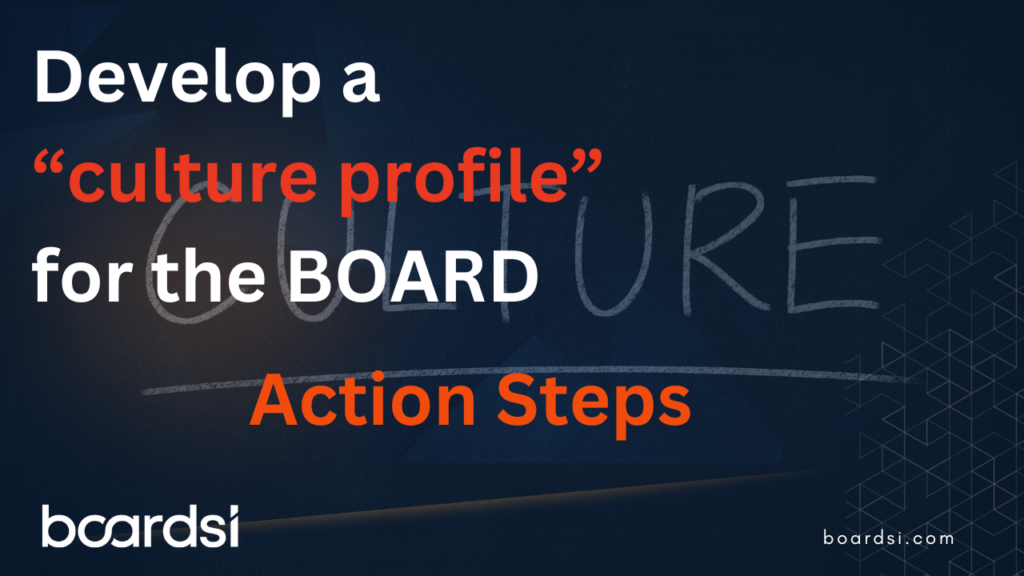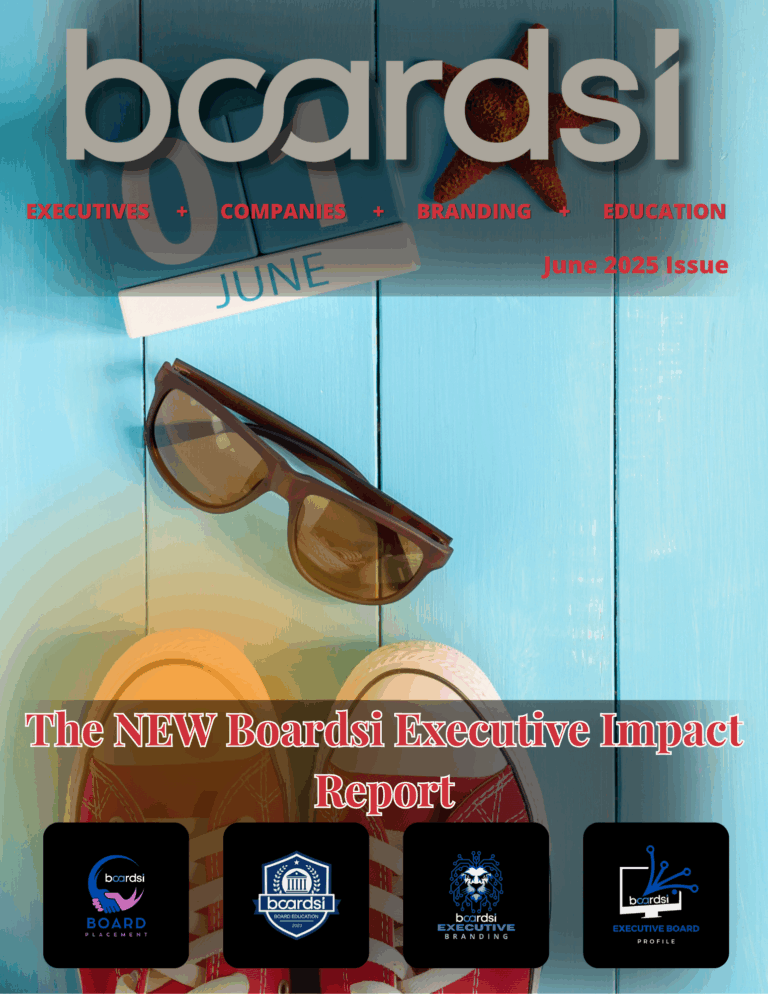Developing a “culture profile” for the board is a strategic approach to ensure that new directors align with the board’s values, behavioral norms, and long-term vision. This process involves clearly defining the unique cultural elements that shape the boardroom’s dynamics and translating these into actionable guidelines for recruitment.
Here’s the best approach:
Step 1: Assess Current Board Culture
Begin by evaluating the existing culture within the boardroom. Understanding the current state is critical for defining the culture you want to sustain or evolve.
Key Questions to Consider:
- How does the board approach decision-making (consensus-driven, majority rule, or independent authority)?
- What communication styles are most effective (formal, informal, or adaptive)?
- What values drive the board’s actions (e.g., transparency, innovation, risk aversion)?
- How does the board resolve conflicts (open dialogue, mediation, avoidance)?
Tools: Use surveys or structured interviews with current directors to capture insights about the board’s dynamics, values, and behavioral norms.
Step 2: Identify Core Values
Distill the insights into a set of core values that define the board’s culture. These values should reflect the principles that guide decision-making, interactions, and governance.
- Examples of Core Values:
- Collaboration: Prioritizing teamwork and mutual respect in discussions and decisions.
- Integrity: Ensuring transparency, ethical behavior, and accountability.
- Adaptability: Embracing change and fostering innovation.
- Diversity: Valuing diverse perspectives, skills, and experiences.
Step 3: Define Behavioral Norms
Translate the core values into behavioral expectations. These norms provide clarity on how directors are expected to interact, communicate, and contribute.
- Examples of Behavioral Norms:
- Actively listening to all perspectives during discussions.
- Speaking constructively and challenging ideas respectfully.
- Committing to thorough preparation for meetings.
- Supporting consensus-based decisions once finalized.
Step 4: Document the Culture Profile
Compile the values and norms into a clear, actionable document that serves as a guide for current directors and a benchmark for future recruitment.
Components of a Culture Profile:
- Introduction: A brief statement about the importance of culture in the boardroom and its role in governance.
- Core Values: A list of the board’s guiding principles, with explanations.
- Behavioral Norms: Specific actions and behaviors expected from directors.
- Alignment with Organizational Goals: How the board’s culture supports the organization’s mission and strategy.
Step 5: Integrate the Culture Profile into Recruitment
Use the culture profile to evaluate candidates and ensure alignment with the board’s values and norms.
Interview Questions:
- “How do you approach collaboration in a group of strong personalities?”
- “Describe a time when you navigated a challenging decision while maintaining alignment with your team’s values.”
- “How do you balance challenging the status quo with respecting organizational norms?”
Assessment Tools:
- Behavioral assessments (e.g., DISC, Hogan) to measure communication styles and interpersonal tendencies.
- Role-playing scenarios to observe how candidates navigate typical boardroom dynamics.
Step 6: Revisit and Refine Regularly
Board culture evolves as the organization grows. Periodically review and update the culture profile to ensure it reflects current goals and dynamics.
- Action Tip: Schedule annual culture reviews during strategic retreats or board evaluations.
Examples of Board Culture Profiles
Example 1: Sustainability-Focused Organization
Core Values:
- Transparency: Commit to open and honest communication.
- Sustainability: Ensure all decisions prioritize environmental and social responsibility.
- Collaboration: Work together to foster innovation and drive impact.
Behavioral Norms:
- Actively listen to diverse perspectives during discussions.
- Evaluate decisions through the lens of sustainability and long-term impact.
- Champion initiatives that align with the organization’s ESG goals.
Alignment with Mission: The board’s culture supports the organization’s mission to be a leader in sustainable development and ethical business practices.
Example 2: Tech Startup Board
Core Values:
- Agility: Adapt quickly to industry changes and evolving market demands.
- Innovation: Foster creativity and embrace bold ideas.
- Accountability: Deliver measurable results and own decisions.
Behavioral Norms:
- Encourage risk-taking while maintaining calculated oversight.
- Emphasize fast decision-making during critical situations.
- Hold each other accountable for meeting strategic objectives.
Alignment with Mission: The board’s culture drives the company’s goal to disrupt markets with cutting-edge technology and scale rapidly.
Template for a Board Culture Profile
[Board/Organization Name] Culture Profile
Introduction
At [Organization Name], the boardroom is where values, vision, and strategy converge. This culture profile defines the principles and behaviors that guide our governance and ensure alignment with our mission.
Core Values
- [Value 1]: [Brief explanation].
- [Value 2]: [Brief explanation].
- [Value 3]: [Brief explanation].
- [Value 4]: [Brief explanation].
Behavioral Norms
- [Norm 1].
- [Norm 2].
- [Norm 3].
- [Norm 4].
Alignment with Mission
Our board’s culture supports [Organization Name]’s mission to [mission statement]. By fostering a culture of [key cultural themes], we ensure that every decision contributes to [specific goals].
Guidance for Recruitment
Candidates should align with these values and demonstrate the ability to:
- [Recruitment expectation 1].
- [Recruitment expectation 2].
- [Recruitment expectation 3].









